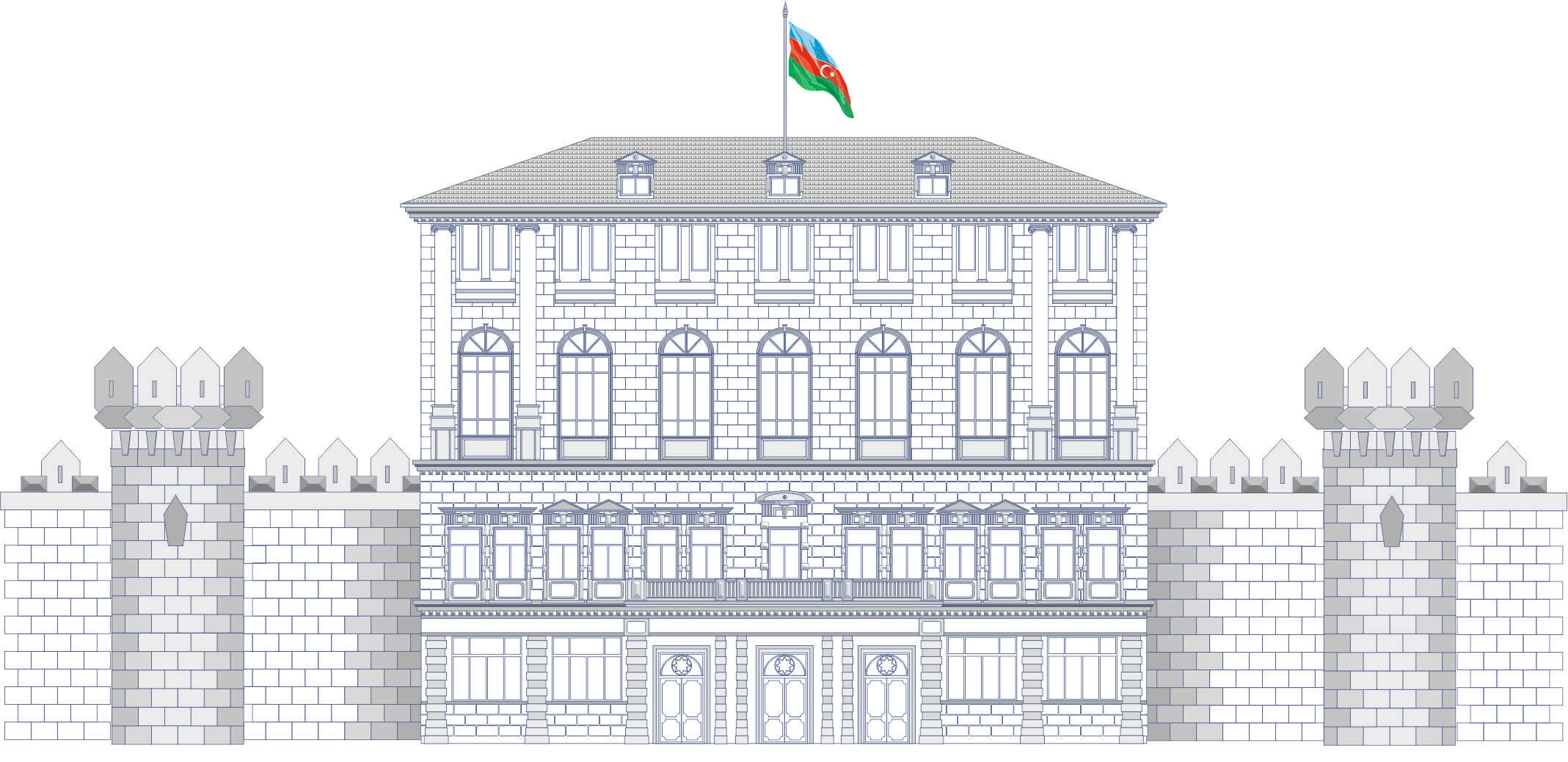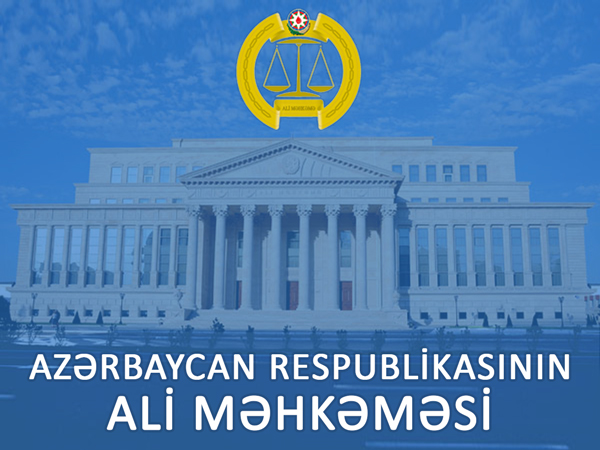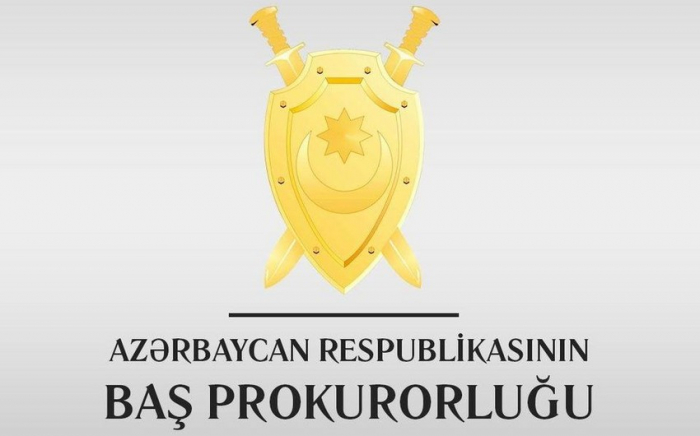ON BEHALF OF THE REPUBLIC OF AZERBAIJAN
DECISION
OF THE PLENUM OF CONSTITUTIONAL COURT
OF THE REPUBLIC OF AZERBAIJAN
On interpretation of the Article 177.2.3-1 of the Criminal Code of the Republic of Azerbaijan
22 June 2015 Baku city
The Plenum of the Constitutional Court of the Republic of Azerbaijan composed of Farhad Abdullayev (Chairman), Sona Salmanova, Rovshan Ismaylov, Sudaba Hasanova, Mahir Muradov(Reporter-Judge), Rafael Gvaladze, Isa Najafov and Kamran Shafiyev;
attended by the Court Clerk Faraid Aliyev,
representatives of interested parties – Vidadi Jafarov, Judge of Court of Appeal of Sumgait city; Eldar Askerov, Senior Advisor of the Department for Administrative and Military Legislation of Milli Mejlis of the Republic of Azerbaijan;
expert – prof. Firuddin Samandarov, Head of the Department of Criminal Law and Criminology of Baku State University, Doctor of Legal Sciences;
specialists – Shahin Yusifov, Chair of the Criminal Board of Supreme Court of the Republic of Azerbaijan, Gail Mamedov, Judge of Court of Appeal of Baku city; Murvet Hasanov, Deputy Head of Department on maintenance of public prosecution of the Prosecutor's Officeof the Republic of Azerbaijan;Tamerlan Rustamov, Senior specialist of Department of payment service providers and calculations of the Central Bank of the Republic of Azerbaijan;
in accordance with the Article 130.6 of the Constitution of the Republic of Azerbaijan examined in open judicial session via special constitutional proceedings the case on inquiry of Court of Appeal of Sumgait cityon interpretation of Article 177.2.3-1of the Criminal Code of the Republic of Azerbaijan.
having heard the report of Judge Mahir Muradov, the reports of the legal representatives of the subjects interested in special constitutional proceedings and specialists, conclusions of expert, examined the materials of the case the Plenum of Constitutional Court of the Republic of Azerbaijan
DETERMINED AS FOLLOWS:
The Court of Appeal of Sumgait city having applied to the Constitutional Court of the Republic of Azerbaijan (hereinafter referred to as the Constitutional Court) asked for interpretation of the Article 177.2.3-1 of the Criminal Code of the Republic of Azerbaijan (hereinafter referred to as the Criminal Code).
In the inquiry it is indicates that by sentence of the Sumgait city Court dated December 18, 2014 T. Tagiyeva was condemned under the Article 177.1 of the Criminal Code for stealing from O. Askerova’s bag the ATM card “Gold Card” of “Bank of Baku” bank together with paper with the code specified on it, she took away 300 AZN, which were available on the card from the payment terminal, having caused by that the material damage to the latter.
The appeal protest with a request to cancel a decision and to send the criminal case for reconsideration has been given on a decision of the Sumgait city court. The appeal protest has been proved by the fact that T. Tagiyeva, having entered into the ATM the ATM card belonging to O. Askerova and her PIN code by means of computer system of the cash machine took away the money, which were available on O. Askerova's account, having committed covert embezzlement. According to prosecutor's office, this act of T. Tagiyeva has to be classified not under the Article 177.1 of the Criminal Code but under the Article 177.2.3-1 of this Code.
Due to the disagreement in jurisprudence connected with to what cases provision “commission with use of electronic data storage device, or information technologies” in the Article 177.2.3-1 of the Criminal Code extends the Court of Appeal of Sumgait city has come to a conclusion concerning the necessity of interpretation of this article.
In connection with the inquiry, the Plenum of the Constitutional Court considers important to note the following.
According to parts I and II of the Article 13 of the Constitution of the Republic of Azerbaijan (hereinafter referred to as the Constitution) the property in the Republic of Azerbaijan is inviolable and protected by the State. The property can have the form of State property, private property and municipal property.
Everyone has the right to property. No form or kind of property shall have any advantage. The property right, including the private property right, is protected by law (parts I and II of the Article 29 of the Constitution).
The property is included in number of the objects protected by the criminal legislation, and its protection is determined as one of the main objectives of the Criminal Code. Thus, according to Article 2.1 of the Criminal Code, tasks of the Criminal Code of the Republic of Azerbaijan are: providing the world and safety of mankind, protection of human and citizen rights and freedoms, property, economic activity, public order and public safety, the environment, the constitutional system of the Republic of Azerbaijan from criminal encroachment, and also the prevention of crimes.
Criminal action (actions or inaction), and also punishments for these actions and other measures of criminal - legal nature are determined only by the present Code (Article 5.1 of the Criminal Code). The person is a subject of criminal liability and punishment only for commitment of socially dangerous action (action or inaction) and its consequences, concerning of which his/her fault is provided (Article 7.1 of the Criminal Code).
The providing of these tasks and the principles represents importance at correct classification of committed socially dangerous act.
For consideration of the issue raised in the inquiry, first of all, it is necessary to analyze a concept of classification of crimes.
In the criminal law the classification of a crime is understood as determination in committed socially dangerous act of the corresponding crime components. Classification is the consecutive and logical process directed to determination of exact compliance of the actual circumstances of committed act to signs of crime components. Therefore, its initial condition consists in determination and assessment of the actual circumstances of committed act representing legal meaning.
The classification of the signs inherent to any crime components according to an object, objective quality, the subject and subjective quality of a crime is carried out in case of determination of the actual circumstances of committed act. At the same time the features, the subject of act, are investigated its motives and the purposes are established and the nature of consequences is determined. After establishment of all actual circumstances, which represent the importance for case with the purpose of classification of socially dangerous act made by the person the corresponding criminal legal norm is applied.
One more condition of classification of a crime consists in determination of compliance of structure of committed socially dangerous act to the structure described in the chosen norm.
According to the legal position formed by the Constitutional Court at investigation of each criminal act the correct determination of its structure and the correct qualification are directed on determination whether an act reflecting signs of a crime is a crime, on determination of existence of fault at the person accused for commission of crime, and also on imposition of fair punishment to the person accused for this crime. Otherwise it can become the reason of prosecution of the innocent person or evasion from responsibility of the person guilty of commission of crime, the wrong application of punishment. It in its turn can lead to violation of the principles of legality, equality before the law, responsibility for fault, justice and humanity on which the Criminal Code is based (decision of the Plenum of Constitutional Court of March 17, 2011 “On interpretation of Article 244.1 of the Criminal Code of the Republic of Azerbaijan”).
Leaning on the above, the Plenum of the Constitutional Court considers important the determination of components of crimes committed with the purpose of embezzlement.
Among property crimes, the crimes committed with the purpose of embezzlement, differ by high public danger. The crimes committed with the purpose of embezzlement, encroaching on various objects of property often are called as property crimes. Such crimes are expressed in withdrawal by the guilty person contrary to the law of objects of a material world, their turning in own advantage or for benefit of other persons.
In this context, any material-property cost having commodity cost and also the money which is the general equivalent of any material costs can make a subject of the crimes committed with the purpose of embezzlement. These crimes are committed by active actions.
Objective quality of embezzlement is consists in encroachment of the property relations. Irrespective of a form of commitment, embezzlement consists in withdrawal and (or) the turning of someone else's property for benefit of the guilty person or other persons.
Any form of embezzlement from the subjective point of view is characterized by fault only in the form of direct encroachment. The guilty person realizes that he/she illegally and gratuitously withdraws someone else's property and (or) turns it in own favor or for benefit of other person, expects that it will cause actual material damage to the owner (or to other owner of property) and wishes such consequences. One more necessary sign of subjective quality of embezzlement consists in availability of the mercenary motive.
Theft acts as a type of the crimes committed with the purpose of embezzlement. According to the criminal legislation, theft is a secret embezzlement of another person’s property (Article 177.1 of the Criminal Code).
In the former edition of Article 177.2.3 of the Criminal Code the commitment with illegal penetration into the dwelling, the room, on a warehouse or other storage was provided as a classification sign of theft. In investigative and court practice there were certain difficulties in connection with application of this article therefore the Prosecutor's Office of the Republic of Azerbaijan, having made an request to the Constitutional Court, asked to give interpretation of this article.
In the decision of the Plenum of Constitutional Court as of June 9, 2011 “On interpretation of Article 177.2.3 of the Criminal Code of the Republic of Azerbaijan” it is indicated that the changes occurring in economic and social areas of public life have caused new tendencies in structure and dynamics of criminality. Appearance of new kinds of the crimes, new forms and means of criminal activity, does necessary an establishment of a criminal liability for such acts. It is possible to attribute to such acts, taking place in practice of last year’s embezzlement of another’s property from depositories, or embezzlement from oil or gas pipelines using new technologies. For example, though at theft the concepts “oil and gas pipelines” have comprised all signs of “depository” provided in Article 177.2.3 of the Criminal Code, the legislation has not provide the criminal liability for such form of embezzlement. On the basis of specified, Plenum of the Constitutional Court considers that taking into account requirements of modernity the perfection of a disposition of Article 177 of the Criminal Code is expedient.
Taking into account the legal position formed by the Plenum of the Constitutional Court in that decision, by the Law of the Republic of Azerbaijan “On modification of the Criminal Code of the Republic of Azerbaijan” dated April 30, 2013 into the Criminal Code was added the Article 177.2.3-1.
In a disposition of this article two acts were established:
- commitment of theft with use of electronic data storage device;
- commitment of theft with use of information technologies.
In this connection the Plenum of the Constitutional Court notes that theft of bank cards, their withdrawal by other way or falsification and embezzlement from ATMs with use of these cards of someone else's cash or implementation of money payments differ from simple thefts on its public danger, a method and means of commitment.
For elimination of uncertainty in classification of the act connected with plunder of a money from the ATM with entering of someone else's card and identification number, the Plenum of Constitutional Court considers necessary to clear up a question of whether the bank card is the electronic data storage device.
First of all, it is necessary to establish the purpose of payment cards and on the basis of it to analyze the features of commitment of crime with use of such card.
According to point 2.1.1 of the “Regulations of issue and usage of payment cards”, accepted by Board of the Central Bank of the Republic of Azerbaijan on July 10, 2012, the payment card is a payment tool used to effect cashless payments and withdraw cash funds. According to points 2.1.6 and 2.1.19 of these Regulations, the card account is a current bank account opened to maintain accounting of card operations. Personalization is a loading of cardholder information to electronic carrier (chip) and/or magnetic stripe when developing payment cards and indent or embossed printing of identification data on cards.
The first part of the Article 177.2.3-1 of the Criminal Code provides for the crime committed by the person with use of the card withdrawn by plunder or by various illegal ways and its identification number (PIN code). Objective quality of this act consists in secret withdrawal of the bank card which is the electronic data storage device, and its code for the purpose to enter the card into the ATM and, having entered a PIN code, to withdraw a money from account of the cardholder. At the same time intention of a person, committing crime consists not in intervention in operation of the ATM, an operating system, but only in plunder of money from the cardholder’s account with use of the given opportunity. An injured person is the person from whom the card was stolen, since by entering the card that was stolen or withdrawn in other illegal way into the ATM, the person makes theft not from the ATM safe but from the account of the owner of this card.
All banking activities fulfilled by means of the card are implemented on a basis and within the agreement signed between the cardholder and the issuer (bank). The perpetrator, entering the card into the ATM and fulfilling the corresponding transactions by means of the keyboard, does not enter directly to the safe of bank, but simply, having connected to an operating system of bank, comes into the account and instructs bank on carrying out a certain transaction. Unlike hacking of the ATM there is no physical entrance to storage (the ATM safe).
In case of theft of a cash with use of the stolen bank card issued to the particular person, a person does not use any technologies but simply, entering identification number (PIN code) known to him/her into computer system of bank, tries to withdraw money of the card holder or fulfill various payments at the expense of this person’s money.
Considering above-noted, the Plenum of the Constitutional Court comes to a conclusion that because of the fact that the payment card contains information on a person and money, which is on his/her bank account, this card should be regarded as the electronic data storage device, and the crime committed with the purpose of theft with its use, should be qualify under Article 177.2.3-1 of the Criminal Code.
The provision “information technologies” provided by the Article 177.2.3-1 of the Criminal Code provides set of tools or means during processes of transfer, acceptance and information processing. According to Article 2 of the Law of the Republic of Azerbaijan “On information, informatization and information security”, information technologies are a system of the methods and means used during information processes including using computer facilities and technology of communication.
Commitment of theft with use of information technologies includes plunder by means of entry into computer system of ATM, at the end – bank, with use of special programs and installations, and a cash withdrawal of money either implementation of different types of payments or money transfer from a bank account into the personal account.
Considering the aforementioned, the Plenum of the Constitutional Court comes to conclusion that because of the fact that the payment card contain information on a person and money, which is on his/her bank account, this card should be regarded an electronic data storage device, and a crime committed with the purpose of theft with its use, should be qualified under the Article 177.2.3-1 of the Criminal Code.
Being guided by the Article 130.6 of the Constitution of the Republic of Azerbaijan and the Articles 60, 63, 65-67 and 69 of the Law of the Republic of Azerbaijan “On Constitutional Court”, Plenum of the Constitutional Court of the Republic of Azerbaijan
DECIDED:
1. Because of the fact that a payment card contains information about person and money on his/her bank account, this card should be regarded an electronic data storage device, and crime committed using such card with the purpose of theft, should be qualified under the Article 177.2.3-1 of the Criminal Code of the Republic of Azerbaijan.
2. The decision shall come into force from the date of its publication.
3. The decision shall be published in “Azerbaijan”, “Respublika”, “Xalq Qazeti” and “Bakinskiy Rabochiy” newspapers, and “Bulletin of the Constitutional Court of the Republic of Azerbaijan”.
4. The decision is final, and may not be cancelled, changed or officially interpreted by any institution or official.














